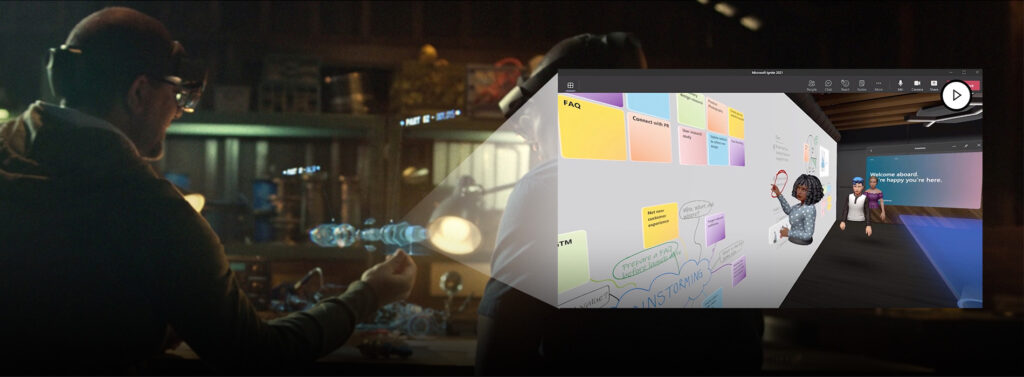After decades in the office, accustomed to face-to-face interaction on a daily basis, workers everywhere pivoted to working from their dining rooms or living room coffee tables overnight. With this new remote way of working came the challenge of collaborating at a distance, hence the dramatic increase of online video conferencing platform usage. Microsoft Teams provided a fast and easy solution and gave people the power to meet and share content virtually. While this switch gave workers more flexibility and proved to be more efficient than many expected it to be, the virtual meeting has resulted in a less engaging experience than in-person meetings. Microsoft is seeking to inject some of the lost personal connection of face-to-face meetings with Mesh for Microsoft Teams, expected to roll out in 2022.
This new feature provides the ability for remote workers to join a single collaborative holographic experience that brings participants into a shared virtual space. It utilizes the mixed-reality capabilities of Microsoft Mesh to create an experience that mimics the in-person meetings we are so used to. Within this virtual format, chat and document sharing, as well as Microsoft Teams’ Together Mode and Presenter Mode, are available to create a full featured immersive online meeting experience.
When Mesh for Teams rolls out, it will include a set of pre-built immersive spaces for a variety of scenarios, from meetings to social mixers. Eventually, users will be able to build their own custom spaces. These custom spaces can even mimic physical office space and provide a scenario where colleagues can ‘bump’ into each other in the hall.
With the roll out preview in the first half of 2022, users will be able to create a personalized avatar with which to join a Teams meeting. Users will also still be able to choose live video of themselves or use a static picture or bubble with initials.
Mesh for Teams will be accessible to anyone via devices such as smartphones, laptops, and mixed-reality headsets. Providing an engaging, immersive, and fun experience for users, it is also a gateway to the metaverse, which Microsoft defines as a persistent digital world that is inhabited by digital twins of people, places and things.




